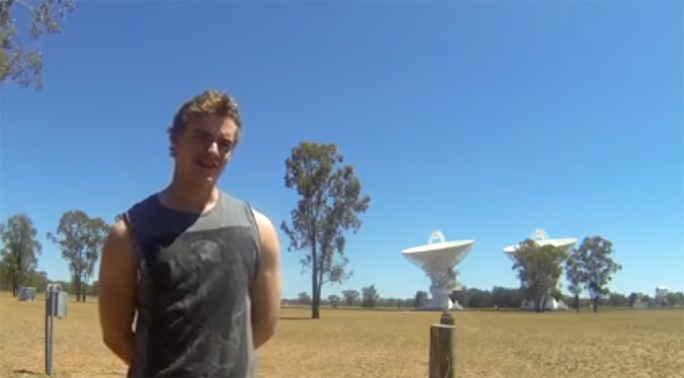How did you spend your summer holiday? The students that took part in astronomy projects with us for the CSIRO summer vacation program during the last few months have been busy puzzling over pulsars, monitoring the sky for RFI, working on technology for our newest telescope, ASKAP, and thinking about the biggest stars in our galaxy (and no, we’re not talking about this week’s Oscar winners).
One of the summer students, Gabriel Murphy, spent his time hunting for super-massive black holes at our Australia Telescope Compact Array in Narrabri.
Summer vacation student Gabriel Murphy at the Australia Telescope Compact Array in Narrabri.
It is now thought that virtually every galaxy hosts a super-massive black hole (SMBH) at its centre, which are believed to have played a key role in the evolution of their host galaxies.
However, it is often difficult to find these SMBH as they are obscured by a surrounding dust torus (like a doughnut) that absorb powerful UV/X-ray emission ‘signatures’ of an active SMBH.
The good news is that by combining infrared and radio astronomy surveys, it is still possible to find SMBHs in the early Universe. NASA’s WISE satellite has produced a mid-infrared survey of the entire sky, which, when combined with radio data from surveys such as the SUMSS and Stripe 82, can provide a unique way to find these hidden black holes.
Watch Gabriel’s video to get a taste of his experiences during the project, on the ground with the ATCA antennas and in the Narrabri Control Room.
Click through for more information about CSIRO’s summer vacation scholarship program.


